The 20 Low Carb and High Fat Foods You Can Eat On The Ketogenic Diet
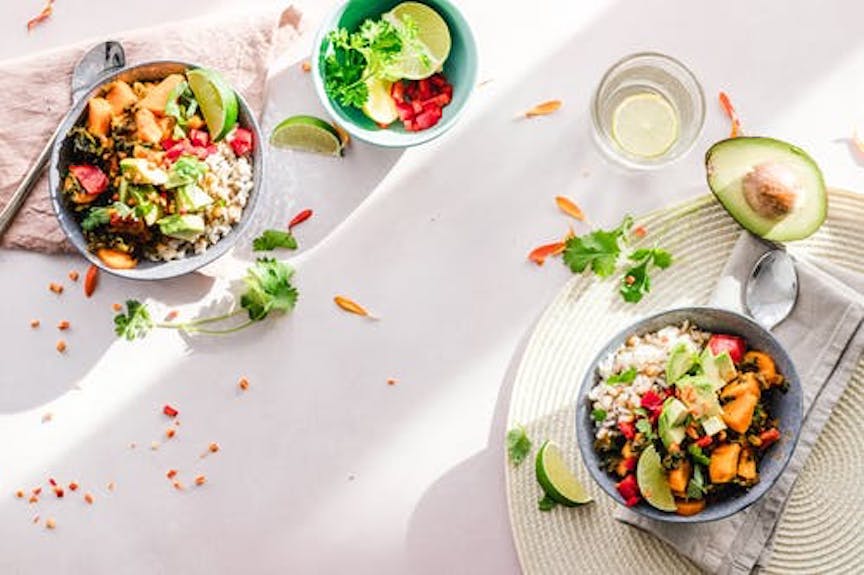
What to eat on a ketogenic diet vary from person to person because keto is a very individualized diet. One thing that all keto-ers agree on is that they should be consuming organic meats, healthy fats, and non-starchy vegetables.
The foods you should be eating on a ketogenic diet are to be high fat, low carb, and moderate protein. When your macro ratios are correct, you'll be giving your body the right amount of energy to burn fat for fuel instead of glucose.
The ketogenic diet is effective against a variety of cancers, Alzheimer's disease, and other illnesses. Other benefits of ketogenic diets weight loss, better blood sugar regulation, and reduced cravings for carbs.
The Ketogenic diet helps get your body into ketosis, which is the metabolic state where fat becomes your main source of energy instead of glucose. By eating high-fat foods, you are helping to put your body into ketosis and give it all the nutrients it needs while still enjoying delicious meals.
Intrigue? If that's the case, before beginning a ketogenic diet, it's important to familiarize yourself with a correct keto diet food list and how much of each category you consume.
In this article, we will cover some tips to introduce some variety into your keto diet to help keep it interesting and encourage you to continue with the plan long-term. After sticking with the ketogenic diet for a while, many people find themselves struggling to remember what they were allowed to eat and bored of their food options.
On a typical keto diet, fat intake accounts for approximately 70% to 80% of total daily calories, protein 15% to 20%, and carbohydrates 5%.
Below is a list of commonly eaten foods that are typically allowed on the keto diet:
What Is A Keto Meal Plan?
Here are some examples of high-fat, low-carb meals that are on the ketogenic diet:
- high in fat and low in carbs, which can help to reduce hunger and fatigue.
- allow vegetables to be eaten as long as they don't contain any carbs, but some popular keto veggies include broccoli and leafy greens.
- eating a lot of protein, with low or no carbs and minimal fruit.
- avoid the same high-carb foods they used to eat.
Keto Diet Food List
If you're new to keto or just still learning the ropes, your biggest questions may be figuring out what high-fat low-carb foods are healthy. You will have more energy and be healthier if you cook your keto-friendly food.
Healthy Fats
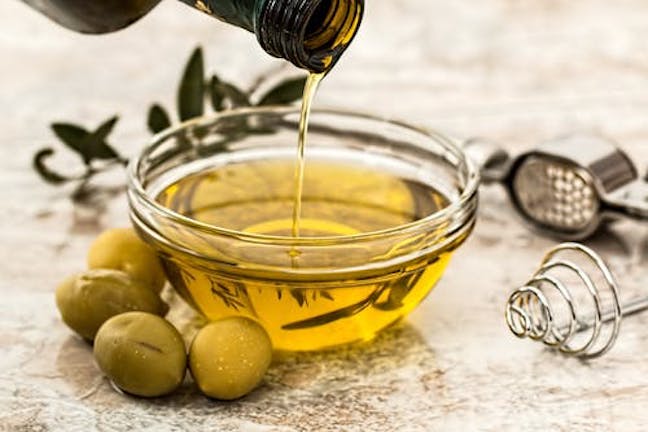
1.Olive Oil
Saturated fats, monounsaturated fats, and some forms of polyunsaturated fat (PUFAs), especially omega-3 fatty acids, are all healthy keto fats.
Olive oil has numerous advantages for your heart. It's high in oleic acid, a monounsaturated fat that has been proved to lower risk factors for heart disease.
Extra-virgin olive oil, on the other hand, has a high content of polyphenol antioxidants — plant chemicals that help to maintain heart health by lowering inflammation and improving circulation.
It's essential to use olive oil for low-heat cooking or add it to meals after they've been cooked because, like other unsaturated fats, it isn't as stable at high temperatures. Avocado oils, MCT oil, Cold-pressed coconut oil are also good choices.
2.Butter and Ghee
On the keto diet, butter and ghee are excellent fats to consume. Butter has virtually no carbohydrates in it, while ghee is carbohydrate-free. Lard, chicken fat, duck fat, and organic cocoa butter are also good sources.
Clarified butter is produced by heating butter and removing the milk solids that rise to the top. It has a strong buttery flavor and is commonly used in Indian cuisine.
Proteins
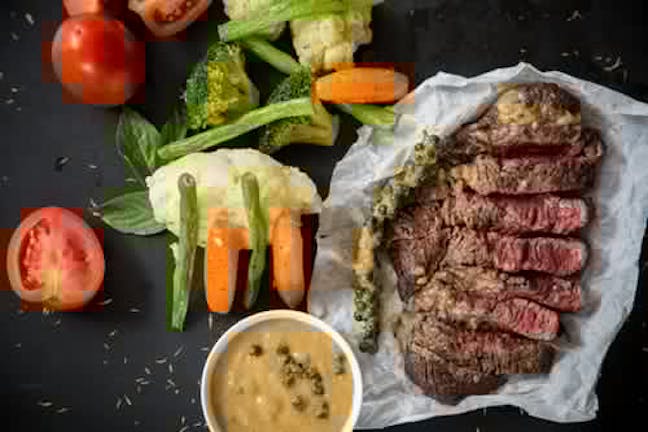
3.Meat and Poultry
Fresh meat and poultry are low in carbohydrates and high in B vitamins. They're also high in protein, which may help preserve muscle mass on a calorie deficit.(17, 18, 19).
Grass-fed beef is a wonderful choice if you're trying to reduce weight since it has greater amounts of omega-3 and conjugated linoleic acid (CLA) than meat from grain-fed cattle. Lamb, goat, veal, venison, liver, turkey, quail, pheasant, goose, duck are all excellent.
Consider fattier cuts of meat rather than leaner ones. Chicken thighs and legs are preferable to chicken breasts because they have much more fat.
4.Cage-free Eggs
Eggs are a great source of protein. Eggs are ideal for the keto diet because each large egg has less than 1 gram of carbohydrates and around 6 grams of protein.
Eggs have been discovered to stimulate hormones that make you feel fuller. Egg whites, rather than whole eggs, are not advisable since the majority of an egg's nutrients are found in the yolk. This comprises lutein and zeaxanthin antioxidants that protect eyesight.(25)
5.Seafood
Salmon and other fish are high in B vitamins, potassium, and selenium, to mention nothing of being almost carb-free.(8)
Omega-3 oils, found in fatty fish like salmon, herring, sardines, anchovies, bass, flounder, mackerel, tuna trout and other fatty fish, have been linked to lower insulin levels and improved insulin sensitivity in people who are overweight or obese.(13).
Vegetables
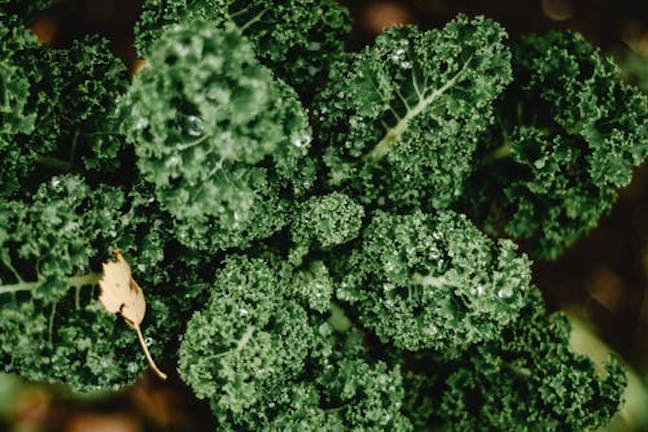
6.Green Leafy Vegetables
Keto diet vegetarians and vegans can eat leafy greens, which are low in carbohydrates but high in vitamins, minerals, and antioxidants.
Green leafy vegetables are low in carbs and make great keto foods. They're also high in vitamins, minerals, and antioxidants (44). Vitamin K and iron are present in significant amounts in dark leafy greens like spinach, kale, and collard greens (44).
Spinach, arugula, lettuce, bokchoy, collard greens, mustard greens, kale, swiss chard, and red or green cabbage are all excellent sources of greens. These vegetables provide a hearty texture to your meals without increasing the amount of carbohydrates. Herbs like oregano, thyme, sage, mint, parsley, cilantro, basil, lemongrass, and rosemary, offer great flavor with very few carbohydrates.
7.Peppers
Peppers come in a variety of forms, some of which are suitable for the keto diet. While they're technically fruits, they're cooked like veggies.
Hot peppers, especially small ones, add a little spice to meals, and jalapeños are ideal for creating keto-friendly hors d'oeuvres. You may use bigger, mild peppers, such as bell peppers and poblanos, in a variety of recipes or fill them with stuffing to make delectable low carb dinners
Vitamin C is abundant in peppers, as well. One bell pepper, for example, provides 107% of the Daily Value for vitamin C.(45)
8.Summer Squash
Summer squashes, such as yellow squash and zucchini, are extremely versatile and low in carbohydrates. Zucchini is quite popular on keto. You can create zucchini noodles using a spiralizer by cutting the vegetable into long strands.
You may also use zucchini to make a rice alternative or add it to baked items without altering the flavor. I enjoy thinly slicing it with a mandoline and salting and peppering it before eating it as a cold salad.
You may create zucchini noodles by using a spiralizer or toss zucchini with olive oil, salt, and pepper serve it with some grated parmesan on top.
9. Other Nonstarchy Vegetables
Low-carb veggies are nutrient-dense and anti-oxidant rich, with a low calorie and carb count.
Carrots, mushrooms, peppers, broccoli, green beans, turnips, radishes, celery root, parsnips, leeks, and shallots are all great choices.
Cauliflower is an excellent keto food because it's low in carbohydrates yet high in many nutrients. It's also highly versatile.
You can simply transform low-carb cauliflower into cauliflower rice or mashed cauliflower. Spaghetti squash is a great substitute for spaghetti, and low-carb root vegetables like jicama and turnips can be used as alternatives to crispy potatoes or fries.
10.High-Fat Veggies
Avocados and olives are both fruits, yet they have a greater fat content than other veggies. The fat content in avocados and olives is primarily monounsaturated and polyunsaturated. They also include fiber and are low in net carbohydrates.
Oleuropein, the most abundant antioxidant in olives, has anti-inflammatory effects and might protect your cells from harm.(48)
Drinks

11.Coffee and Tea
Coffee and tea are healthy, carb-free beverages. They include caffeine, which increases your metabolism and may help you feel more awake and alert throughout the day.(77, 78, 79)
Furthermore, coffee and tea drinkers have been found to have a reduced risk of diabetes. In reality, those who drank the most coffee had the lowest chance of getting diabetes.
12.Bone Broth
All bone broths are classic staples in the Paleo diet and Keto diet. They're becoming increasingly popular among both diets. Bone broths are nutrient-dense, easy to digest, flavorful, and effective in aiding healing because they are rich in minerals.
Bone Broth may reduce inflammation, arthritis, and joint pain. It also strengthens the immune system and a variety of diseases, such as allergies, asthma, and arthritis.
Foods to Limit
These are the keto meals that you can enjoy only on special occasions to maintain your ketosis:
13.Butter and Cream
Moderate intake of high-fat dairy items, according to some studies, lowers your risk of heart attack and stroke.
Conjugated Linoleic Acid (CLA) is abundant in butter and cream, which has been proved to aid fat reduction.
To maximize your results, you should limit the number of dairy products that you eat. Due to their high sugar content, they should only be consumed "now and then." Low-fat milk and soft cheeses have significantly more carbohydrates, while high-fat hard cheeses have the fewest.
14.Cheeses

Cheeses are typically low in carbohydrates and high in fat, making them ideal for the keto diet. It has high amount of saturated fat, but there is no evidence that it raises the risk of heart disease. Some study claims that it may assist in the prevention of this condition.
Cheese also contains CLA, which has been linked to weight reduction and improvements in body composition. Furthermore, cheese consumption daily might help prevent muscle mass and strength.
15.Greek Yogurt and Cottage Cheese
Cottage cheese and plain Greek yogurt are high in protein. While they include carbohydrates, on keto you may eat them in moderation. Both yogurt and cottage cheese have been discovered to aid in the control of appetite as well as satiety.
They're fantastic on their own, but mixing them with chopped nuts, cinnamon, or other spices makes for a delectable keto treat in seconds.
16.Cream and Half and Half
Fresh milk contains cream, which is made up of the fatty component of the fresh milk that is removed during processing. Half-and-half, on the other hand, is made of 50% cream and 50% whole milk.
Both of these dairy products are low in carbohydrates and rich in fat, making them ideal for the ketogenic diet.
The cream is great for adding to your coffee if you decide to follow the keto diet because it adds fat which keeps you satieted and gives you the energy boost you need throughout the day. It can also be used for baking and cooking as well.
Some research suggests that high-fat dairy consumption may lower one's danger of heart attack and stroke (29, 38, 39).
CLA, like other fatty dairy products, is high in butter and cream, which may help people lose weight.(30)
Plant-Based Milks
Soy, almond, and coconut milks are all suitable for keto diets
Unsweetened versions are preferable, since sweetened ones contain too much sugar to be considered appropriate for keto. In addition, you should stay away from oat milk because even unsweetened oat milk is high in carbohydrates and therefore unsuitable for keto (43)
17. Nuts and Seeds
Nuts and seeds are good for you since they are high in fat and low in carbohydrates. Nuts consumption is linked to a decreased chance of heart disease, some cancers, depression, and other chronic diseases.(50, 51).
Although most nuts and seeds have a low net carb content, the amount varies considerably by type. Almonds, walnuts, cashews, sunflower seeds, pistachios, chestnuts, pumpkin seeds, sesame seeds, macadamia nuts, and Brazil nuts are all high in carbohydrates; cashews have the highest carbs.
18.Berries
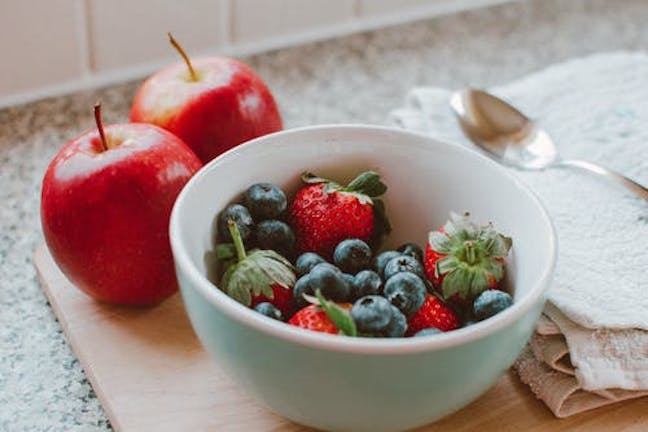
Fruits are high in carbohydrates and should not be consumed on the keto diet, but berries are an exception.
Berries, particularly raspberries and strawberries, are primarily low in carbohydrates and high in fiber. While blackberries and blueberries have fewer carbs than various fruits, they may not be included in ketogenic diets.
The antioxidants in these tiny fruits may help to decrease inflammation and disease.(63, 64)
19.Dark Chocolate and Cocoa Powder
Antioxidants are found in dark chocolate and cocoa. Flavanols in dark chocolate may help to lower blood pressure and preserve the health of your arteries.(68, 69, 70)
Chocolate, for some reason, is permitted on keto. However, it's essential to consume dark chocolate with a minimum of 70% cocoa solids in moderation.
20.Shirataki Noodles
Shirataki noodles are a wonderful addition to the keto diet. They have less than 1 gram of net carbohydrates and only 15 calories per serving because they're mostly water (65).
These noodles are made from a thickening agent known as glucomannan, which has several disease-fighting properties.(66)
Shirataki noodles come in several forms, including rice, fettuccine, and linguine. They can be substituted for standard noodles in most recipes.
Foods to Avoid
On a ketogenic diet, you should avoid sweetened and caloric beverages (sodas, alcohol, sweetened teas and fruit juices). All sugars, process foods, and grains.
Is The Keto Diet Right For You?
The low carb, high fat keto diet is still quite popular, and many individuals find it to be both enjoyable and beneficial. However, it may not be suitable for everyone. When compared to other diets, keto is quite restricting, which may put some people under a lot of stress.
The keto diet can also produce unwanted side effects, especially during the start-up phase. The following are a few of the possible negative impacts of the keto diet.
- dizziness
- fatigue
- digestive changes
- increased cholesterol levels
Creative Ways to Spice Up Your Keto Recipes:
1. Top your salads with non-starchy vegetables like ham, cheese, olives, or avocado
2. Add avocados into your guacamole or any other dish that calls for avocados
3. Add non-starchy veggies into your marinara sauce like spaghetti squash, zucchini noodles, or cauliflower rice
4. Try making low-carb tortillas out of veggies like zucchini, turnip, or eggplant
5. Add some color to your meals by using the right spices
6. Add flavored butter to your vegetables like garlic, coconut oil, and cilantro
7. Add low-carb veggies into your marinara sauce like spaghetti squash, zucchini noodles, or cauliflower rice
8. Try changing up the veggies you add to your breakfast scrambles
Snacks
A variety of healthy snacks can be incorporated into a ketogenic diet:
Low-carb Shirataki noodles can be eaten with a variety of sauces and toppings, hard-boiled eggs, minced meat wrapped in lettuce, protein smoothie in almond milk. Cucumber, zucchini, or bell peppers with a bit of hummus, greek yogurt dip, or melted cheese.
Condiments
Condiments range from 0.5 to 2 carb grams per 1-2 tablespoon serving, including ketchup and salsa, but other condiments like hot sauce or salad dressing are acceptable if made at home with spices (vinegar, oil and herbs) so that there can be a variety of flavor choices.
Final Thoughts
The keto diet can help you lose weight, manage your blood sugar, and other health objectives. Its low-carb, high-fat approach, on the other hand, may seem restricting at first. Nonetheless , this eating style allows you to consume a wide range of nutritious, tasty, and flexible meals that allow you to stay within your daily carb
It's essential to consume a wide range of these foods if you want to reap all of the benefits of the keto diet.

